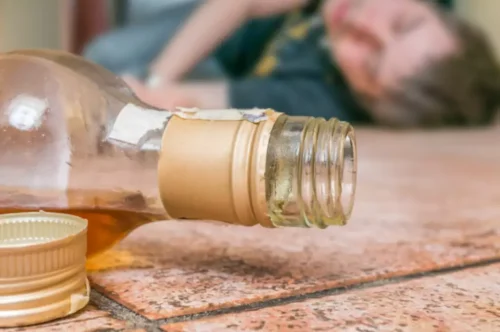- Wednesday August 10, 2022
Stress Management: Doing Progressive Muscle Relaxation Kaiser Permanente

Next, completely tense your neck and shoulders, again inhaling and counting to eight. Again, this step can be repeated until you feel absolutely relaxed in this area, particularly because many people carry tension in their neck and shoulder muscles. After finding a quiet place and several free minutes to practice progressive muscle relaxation, sit or lie down and make yourself comfortable.
- Valium, Librium, Ativan, and Serax are benzodiazepines that may be prescribed to treat symptoms of alcohol withdrawal.
- Medical professionals can provide appropriate treatment options, ranging from medications to hospitalization and detoxification, to ensure your safety during this challenging process.
- You might find it easier to relax your mind if you are following the instructions either in person or by listening to a pre-scripted recording.
- Best of all, bringing the focus back into your body can be supportive for your mind too.
- You can improve your cellular metabolism by adding some drinks with electrolytes to restore the imbalance caused by alcohol.
Can You Mix Muscle Relaxers and Alcohol?
Progressive muscle relaxation (PMR) is a technique where a person tenses and relaxes different muscles in their body to relieve tension and induce a relaxation response. While alcohol shakes are not life threatening, delirium tremens may also cause seizures and may lead to death without appropriate treatment. Alcohol withdrawal may cause shakes when the effects of alcohol on the nervous system wear off, and the brain becomes overwhelmed by activity in the nervous system.
Understanding alcohol “shakes” and tremors
If you suddenly stop drinking, you may experience symptoms of alcohol withdrawal. In the case of long-term alcoholics, though, shakes can be a sign of delirium tremens, which is a very serious condition. While shakes are common with delirium tremens, it can also bring on seizures, which result in convulsions that may resemble shaking. The best chance for a successful, long-term alcohol recovery means committing to an effective alcohol treatment program. It also means committing to lifestyle changes that will keep you physically and mentally healthy, and alcohol free. There are many ways you can take control of your sobriety and live a better life.

Benefits of PMR
Unfold your arms, however, and uncross your legs so that you have easy circulation and your body is able to really relax. The great news is that PMR is easy to learn and can be practiced virtually anywhere. In both studies, however, it didn’t seem to have an effect on diastolic blood pressure. Another 2014 study discovered that PMR, accompanied by music, has the ability to decrease low back pain in pregnant women. Additionally, in a 2015 study, PMR helped mothers with premature babies sleep better during the postpartum period.
- And if you’re into more artsy stuff, painting or dancing lets you express what words cannot sometimes say—perfect for shaking off those heavy feelings without reaching for a drink.
- Understanding your own or a loved one’s relationship with alcohol can help address the root cause of dependency and inform appropriate treatment options.
- This explains why individuals who frequently consume substantial amounts of alcohol may wake up experiencing tremors and feel the need to drink to regain stability.
- While these tremors usually occur in the hands, they can happen anywhere in the body.
- It’s like hitting two birds with one stone—you get to stay fit and wave goodbye to tension.
Research indicates that progressive muscle relaxation can help reduce neck pain, lower back pain, and migraines. Progressive muscle relaxation can also be part of a toolbox of stress management techniques that can improve health and well-being in the long term. Progressive muscle relaxation is generally used along with other how to stop tremors from alcohol cognitive behavioral therapy techniques, such as systematic desensitization. However, practicing the technique alone will give you greater control over your body’s anxiety response. Progressive muscle release is a technique of deep muscle relaxation developed by American physician Edmund Jacobson during the 1920s.
Uncontrollable shaking, usually in the hands, is a common sign of alcohol withdrawal. The shakes also called tremors can begin 6-10 hours after the last drink, and tend to be the most pronounced from the last alcohol consumption. The effectiveness of your PMR practice might be measured by the improvements you notice in your stress levels, anxiety, sleep quality, and https://ecosoberhouse.com/article/does-alcohol-weaken-our-immune-system/ overall relaxation. You might find you feel calmer, more centered, or that you’re sleeping better at night. Keep a simple journal noting your stress levels and feelings before and after each session to see tangible evidence of PMR’s impact over time. Alcohol shakes, also known as alcohol withdrawal tremors, are a common symptom experienced during alcohol withdrawal.

